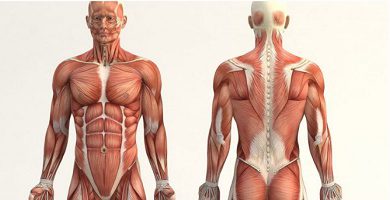How is the structure of DNA?
We explain what the structure of DNA is, what types exist and how it was discovered. In addition, the structure of RNA.
-
How is the structure of DNA?
The molecular structure of DNA (or simply the structure of DNA) is the way in which it is biochemically composed, that is, it is the specific organization form of the proteins and biomolecules that constitute the DNA molecule.
To begin, remember that DNA stands for Nuclear Deoxyribonucleic Acid. DNA is a nucleotide biopolymer , that is, a long molecular structure composed of segments (nucleotides) composed of a sugar (ribose) and a nitrogen base.
The nitrogen bases of DNA can be of four types: adenine (A), cytosine (C), thymine (T) or guanine (G), together with a phosphate group. In the sequence of this compound, all the genetic information of a living being is stored , essential for protein synthesis and for reproductive inheritance, that is, without DNA there would be no transmission of genetic characters .
In prokaryotic living beings , DNA is usually linear and circular. But in eukaryotes , the structure of DNA is shaped like a double helix. In both cases, it is a double-stranded biomolecule , that is, composed of two long chains arranged in an antiparallel way (pointing in opposite directions): their nitrogenous bases face each other.
Between these two chains there are hydrogen bridges that hold them together and in the form of a double helix. Traditionally, three levels of this structure are distinguished:
- Primary structure . It consists of the sequence of chained nucleotides, whose specific and punctual sequence encodes the genetic information of each individual that exists.
- Secondary structure . The mentioned double helix of complementary chains, in which the nitrogenous bases are joined following a strict order: adenine with thymine, and cytosine with guanine. This structure varies depending on the type of DNA.
- Tertiary structure . It refers to the way to store DNA within structures called chromosomes , inside the cell . These molecules must be folded and sorted in a finite space, so in the case of prokaryotic organisms they usually do so in the form of a superhelix, while in the case of eukaryotes a more complex compaction is carried out, given the larger size of the DNA, which requires the intervention of other proteins .
- Quaternary structure . It refers to the chromatin present in the nucleus of eukaryotic cells, where chromosomes are formed during cell division.
-
DNA structure discovery

The specific molecular form of DNA was discovered in 1950 , although the existence of such biological compounds was known since 1869. Its discovery is attributed mainly to scientists James Watson, American, and Francis Crick, British , who They proposed the double helix model of DNA structure.
However, they were not the only ones investigating this issue. His work, in fact, was based on information previously obtained by British Rosalind Franklin, an expert in X-ray crystallography to determine the structure of molecules .
Thanks to a particularly sharp image that Franklin obtained through this technique (the famous “Photograph 51”), Watson and Crick were able to deduce and formulate a three-dimensional model for DNA.
-
DNA types
By studying its structure, that is, its specific three-dimensional conformation, it is possible to identify three types of DNA observed in living beings, which are:
- DNA-B . This is the most abundant type of DNA in living beings and the only one that follows the double helix model proposed by Watson and Crick. Its structure is regular, since each pair of bases has the same size, although leaving grooves (larger and smaller successively) with variation of 35 ° with respect to the previous one, to allow access to the nitrogenous bases from the outside.
- DNA-A . This type of DNA appears in conditions of low humidity and lower temperature , such as in many laboratories. It presents, like B, recurring grooves although of different proportions (wider and less deep for the smaller groove), in addition to a more open structure, with the nitrogenous bases farthest from the axis of the double helix, more inclined with respect to horizontally and more symmetrically in the center.
- Z-DNA . It is distinguished from the previous ones in that it is a double helix with a left turn (levógira) in a zigzag skeleton, and is common in DNA sequences that alternate purines and pyrimidines (GCGCGC), so it requires a concentration of cations greater than that of DNA-B. It is a double helix narrower and longer than the previous ones.
-
RNA structure

Unlike DNA, RNA (Ribonucleic Acid) does not usually appear as a double helix. On the contrary, the structure of the RNA is a simple and single-stranded sequence of nucleotides. . Its nitrogen bases are identical to those of DNA, except in the case of thymine (T), replaced in the RNA by uracil (U).
These nucleotides are linked together by bonds phosphodiester . Sometimes they can generate folds in the RNA chain by attracting each other, thus forming during certain short regions certain types of loops, propellers or forks.





